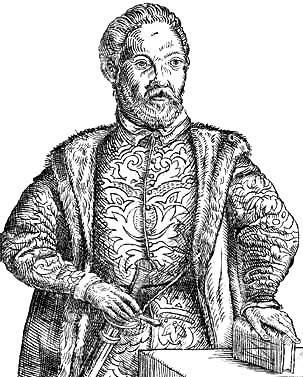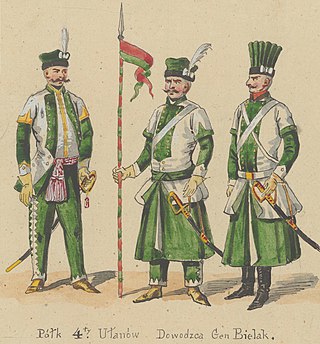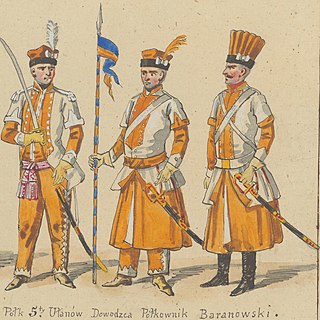
The Grand Duchy of Lithuania was a sovereign state in northeastern Europe that existed from the 13th century, succeeding the Kingdom of Lithuania, to the late 18th century, when the territory was suppressed during the 1795 partitions of Poland–Lithuania. The state was founded by Lithuanians, who were at the time a polytheistic nation of several united Baltic tribes from Aukštaitija. By 1440 the grand duchy had become the largest European state, controlling an area from the Baltic Sea in the north to the Black Sea in the south.

Augustów is a town in north-eastern Poland. It lies on the Netta River and the Augustów Canal. It is the seat of Augustów County and of Gmina Augustów in the Podlaskie Voivodeship. Augustów has an area of 80.90 square kilometres, and as of June 2022 it has a population of 29,305.

Trakai Voivodeship, Trakai Palatinate, or Troki Voivodeship, was a unit of administrative division and local government in the Grand Duchy of Lithuania from 1413 until 1795.

Maciej Stryjkowski was a Polish historian, writer and a poet, known as the author of Chronicle of Poland, Lithuania, Samogitia and all of Ruthenia (1582). The work is generally considered to be the first printed book on the history of the Grand Duchy of Lithuania.

The 4th Lithuanian Vanguard Regiment was a military unit of the Grand Duchy of Lithuania. The full name was 4th Lithuanian Advance Guard Regiment of Josef Bielak.

Vilnian National Guard was a paramilitary unit formed in the city of Vilna during the French invasion of Russia in 1812. Among the duties of the unit were maintaining law and order in the city, but also guarding state and military buildings. The Vilnian National Guard took part in the Battle of Vilna later that year, during Napoleon's retreat from Russia. Following the Russian take-over of the city the Guard was disbanded.

The Provisional Government Commission of the Grand Duchy of Lithuania; also, the Lithuanian Provisional Governing Commission was a provisional administrative body for Lithuania, which had been overtaken by Napoleon's Grand Army during the 1812 French invasion of Russia. On 14 July 1812 the Commission formally joined the General Confederation of the Kingdom of Poland, creating the united Kingdom of Poland.

The 5th Lithuanian Vanguard Regiment was a military unit of the Grand Duchy of Lithuania. The full name was 5th Lithuanian Advance Guard Regiment of Stanisław Byszewski.
The 3rd Lithuanian Vanguard Regiment was a military unit of the Grand Duchy of Lithuania. The full name was 3rd Advance Guard Regiment Field Hetman of Lithuania Antoni Chlewinkiego.

The 8th Lithuanian Cavalry Regiment was a military unit of the Grand Duchy of Lithuania, raised during the Kościuszko Uprising.

The 3rd Lithuanian National Cavalry Brigade was a military unit of the Grand Duchy of Lithuania led by Józef Antoni Kossakowski.
The 6th Lithuanian Vanguard Regiment was a military unit of the Grand Duchy of Lithuania. It was also named:
The 7th Lithuanian Tatar Regiment was a military unit of the Grand Duchy of Lithuania. It was also known as the Tartar Regiment of Alexander Ulano.
The Infantry Company of the Lithuanian Tribunal also known as the Hungarian Banner of the Lithuanian Tribunal was an infantry company of the Grand Duchy of Lithuania charged with protecting the Lithuanian Tribunal, as well as guarding detainees. It was not part of the Lithuanian Grand Ducal Army's establishment. It was called "Hungarian", because its infantry was of the Hungarian-type.
The Hungarian Company of the Lithuanian Grand Marshal was a military unit of the Grand Duchy of Lithuania.
The Hungarian Rifle Company of the Lithuanian Grand Hetman was a military unit of the Grand Duchy of Lithuania.
The Hungarian Company of the Lithuanian Field Hetman was a military unit of the Grand Duchy of Lithuania. The unit was considered as the Lithuanian army's grenadiers.
The 2nd Grodno Battalion of the King and Commonwealth was a military unit of the Grand Duchy of Lithuania.

The Lithuanian Rifle Corps was a riflemen unit of the Grand Duchy of Lithuania.

The Danilewicz (Danielewicz) family – a noble family from the Grand Duchy of Lithuania, with the coat of arms of Ostoja, belonging to the heraldic Clan Ostoja (Moscics). The Danilewicz’s were mentioned by Kasper Niesiecki in Herbarz Polski.









